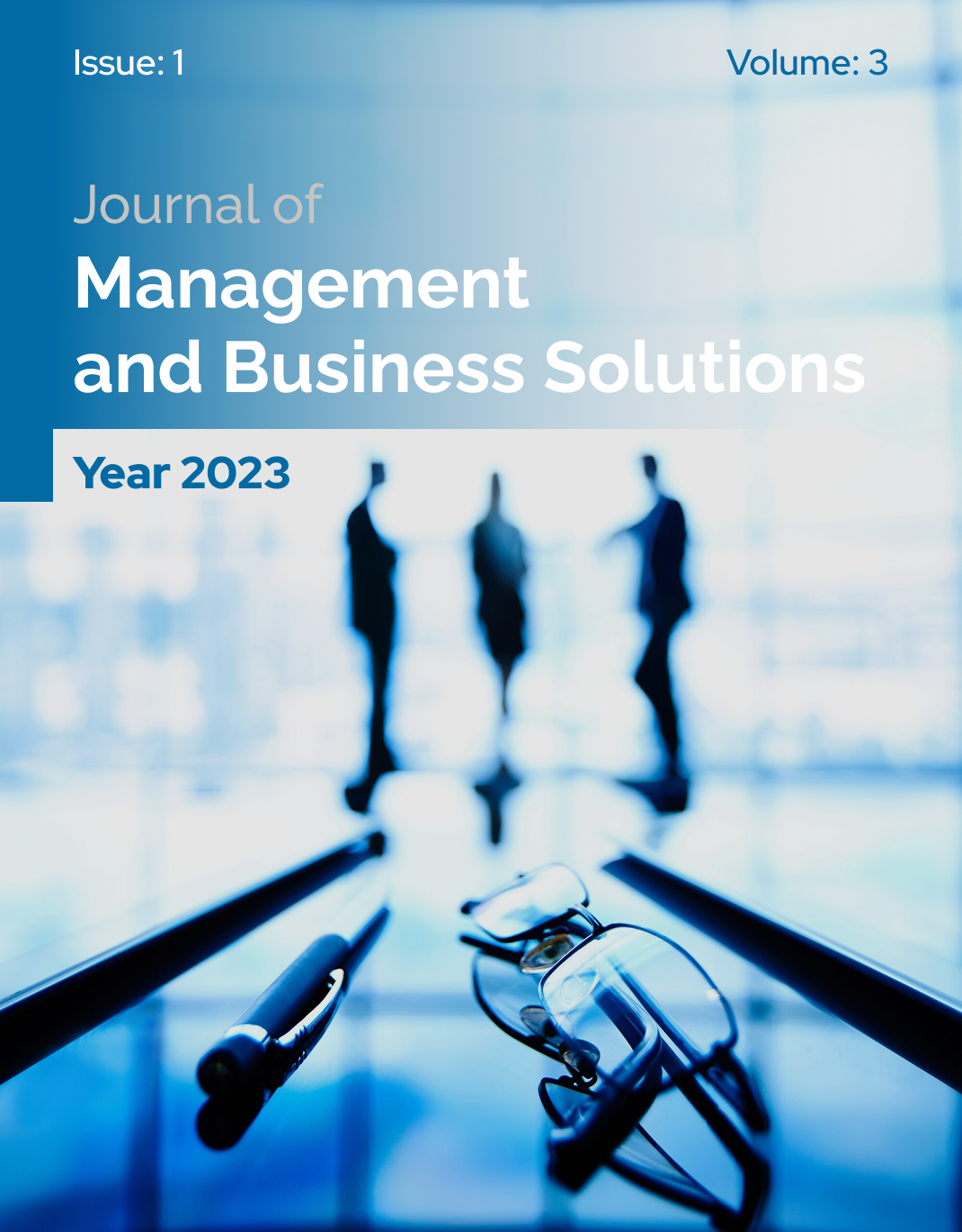Understanding the Strategies for Managing Organizational Change in Family-Owned Enterprises
Keywords:
Family-owned enterprises, organizational change, leadership succession, organizational culture, qualitative research, strategic management, Tehran, intergenerational dynamicsAbstract
This study aims to explore the strategies employed by family-owned enterprises (FOEs) in managing organizational change, with a focus on leadership dynamics, cultural values, and change management practices. This qualitative research utilized a case study approach, drawing data from semi-structured interviews with 22 participants from family-owned businesses in Tehran, Iran. Participants were selected through purposive sampling and included founders, successors, and senior managers across a range of industries. Data collection continued until theoretical saturation was achieved. Interviews were transcribed and analyzed using thematic analysis facilitated by NVivo software. The analysis followed Braun and Clarke’s six-step framework, ensuring a rigorous and systematic approach to coding and theme development. The analysis yielded three main themes: (1) leadership and decision-making, (2) organizational culture and values, and (3) strategic change management practices. Subthemes included visionary leadership, participatory governance, role conflict, resistance to change, intergenerational value conflicts, incremental change, and knowledge transfer mechanisms. Participants emphasized the importance of balancing tradition with innovation, managing intergenerational tensions, and maintaining family cohesion while navigating change. Change efforts were often gradual, trust-based, and communication-driven, reflecting the socioemotional priorities of FOEs. The findings suggest that FOEs adopt unique, culturally embedded strategies to manage organizational change, shaped by the dual imperatives of family legacy and business survival. Understanding these strategies requires attention to the emotional, relational, and symbolic dimensions of change. The study contributes to family business literature by providing context-specific insights from an emerging economy and highlights the need for tailored interventions that align with the distinct logic of FOEs.
Downloads
References
Astrachan, J. H. (2010). Strategy in family business: Toward a multidimensional research agenda. Journal of Family Business Strategy, 1(1), 6–14. https://doi.org/10.1016/j.jfbs.2010.02.001
Armenakis, A. A., & Harris, S. G. (2002). Crafting a change message to create transformational readiness. Journal of Organizational Change Management, 15(2), 169–183. https://doi.org/10.1108/09534810210423080
Bammens, Y., Voordeckers, W., & Van Gils, A. (2011). Boards of directors in family firms: A generational perspective. Small Business Economics, 37(2), 163–180. https://doi.org/10.1007/s11187-009-9221-7
Chrisman, J. J., Chua, J. H., & Sharma, P. (2005). Trends and directions in the development of a strategic management theory of the family firm. Entrepreneurship Theory and Practice, 29(5), 555–576. https://doi.org/10.1111/j.1540-6520.2005.00098.x
Dana, L.-P., & Dana, T. E. (2005). Expanding the scope of methodologies used in entrepreneurship research. International Journal of Entrepreneurship and Small Business, 2(1), 79–88.
De Massis, A., & Kotlar, J. (2014). The case study method in family business research: Guidelines for qualitative scholarship. Journal of Family Business Strategy, 5(1), 15–29. https://doi.org/10.1016/j.jfbs.2014.01.007
Denison, D., Lief, C., & Ward, J. L. (2004). Culture in family‐owned enterprises: Recognizing and leveraging unique strengths. Family Business Review, 17(1), 61–70. https://doi.org/10.1111/j.1741-6248.2004.00004.x
Eddleston, K. A., Kellermanns, F. W., & Zellweger, T. M. (2012). Exploring the entrepreneurial behavior of family firms: Does the stewardship perspective explain differences? Entrepreneurship Theory and Practice, 36(2), 347–367. https://doi.org/10.1111/j.1540-6520.2010.00402.x
Gómez-Mejía, L. R., Haynes, K. T., Núñez-Nickel, M., Jacobson, K. J., & Moyano-Fuentes, J. (2007). Socioemotional wealth and business risks in family-controlled firms: Evidence from Spanish olive oil mills. Administrative Science Quarterly, 52(1), 106–137. https://doi.org/10.2189/asqu.52.1.106
Handler, W. C. (1994). Succession in family business: A review of the research. Family Business Review, 7(2), 133–157. https://doi.org/10.1111/j.1741-6248.1994.00133.x
IFERA (International Family Enterprise Research Academy). (2003). Family businesses dominate. Family Business Review, 16(4), 235–240.
Kotter, J. P. (1996). Leading Change. Harvard Business Press.
Le Breton-Miller, I., Miller, D., & Bares, F. (2015). Toward an integrative model of effective FOB succession. Entrepreneurship Theory and Practice, 39(1), 131–152. https://doi.org/10.1111/etap.12066
Mair, J., & Martí, I. (2009). Entrepreneurship in and around institutional voids: A case study from Bangladesh. Journal of Business Venturing, 24(5), 419–435. https://doi.org/10.1016/j.jbusvent.2008.04.006
Micelotta, E. R., Raynard, M., & Greenwood, R. (2012). Concealing or revealing the family? Corporate brand identity strategies in family firms. Family Business Review, 25(2), 112–132. https://doi.org/10.1177/0894486511431194
Miller, D., Le Breton-Miller, I., & Lester, R. H. (2011). Family and lone founder ownership and strategic behavior: Social context, identity, and institutional logics. Journal of Management Studies, 48(1), 1–25. https://doi.org/10.1111/j.1467-6486.2009.00896.x
Nordqvist, M., Hall, A., & Melin, L. (2009). Qualitative research on family businesses: The relevance and usefulness of the interpretive approach. Journal of Management & Organization, 15(3), 294–308. https://doi.org/10.1017/S1833367200002595
Salvato, C., & Corbetta, G. (2013). Transitional leadership of advisors as a facilitator of successors’ leadership construction. Family Business Review, 26(3), 235–255. https://doi.org/10.1177/0894486513480386
Sharma, P., & Salvato, C. (2011). Commentary: Exploiting and exploring new opportunities over life cycle stages of family firms. Entrepreneurship Theory and Practice, 35(6), 1199–1205. https://doi.org/10.1111/j.1540-6520.2011.00497.x
Sirmon, D. G., & Hitt, M. A. (2003). Managing resources: Linking unique resources, management, and wealth creation in family firms. Entrepreneurship Theory and Practice, 27(4), 339–358. https://doi.org/10.1111/1540-8520.t01-1-00013
Tagiuri, R., & Davis, J. A. (1996). Bivalent attributes of the family firm. Family Business Review, 9(2), 199–208. https://doi.org/10.1111/j.1741-6248.1996.00199.x
Ward, J. L. (2004). Perpetuating the Family Business: 50 Lessons Learned from Long-Lasting, Successful Families in Business. Palgrave Macmillan.
Zahra, S. A., Hayton, J. C., & Salvato, C. (2004). Entrepreneurship in family vs. non‐family firms: A resource‐based analysis of the effect of organizational culture. Entrepreneurship Theory and Practice, 28(4), 363–381. https://doi.org/10.1111/j.1540-6520.2004.00051.x
Downloads
Published
Submitted
Revised
Accepted
Issue
Section
License

This work is licensed under a Creative Commons Attribution-NonCommercial 4.0 International License.




